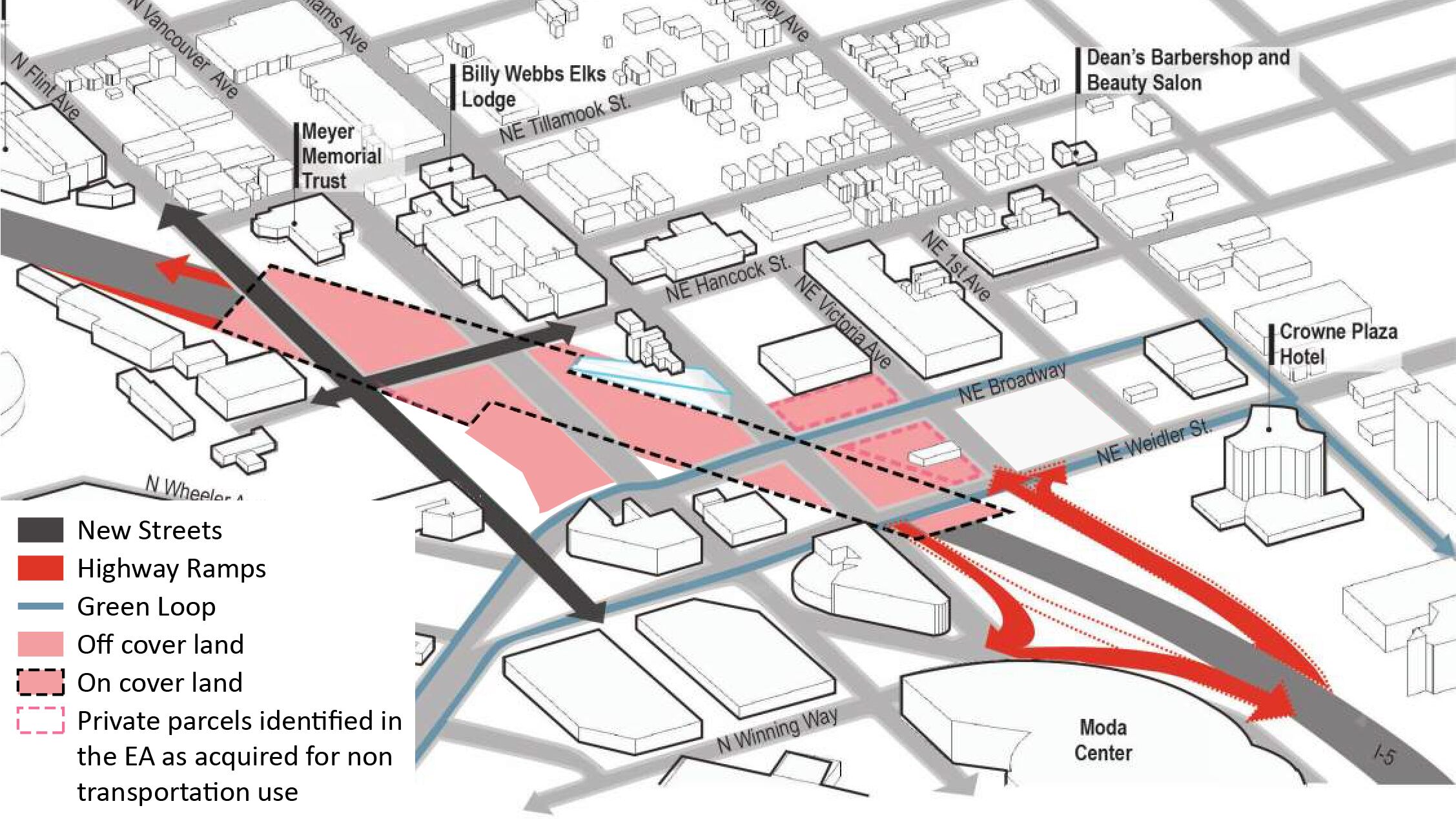Gov. Kate Brown partially broke an impasse Tuesday night when she announced a new design for the Oregon Department of Transportation’s proposed expansion of I-5 at the Rose Quarter.
Brown unveiled a new design, first reported by the Associated Press and Bike Portland, that included a significant expansion of planned caps over the highway. Caps are a top priority for the Albina Vision Trust, a social justice group that walked away from the project in 2020 because ODOT’s design provided only modest caps and did too little to restore the heart of the historically Black Albina neighborhood, which was decimated by the construction of I-5 in the early 1960s.
Albina Vision Trust executive director Winta Yohannes said in a statement the new design provides enough freeway coverage to satisfy her group’s concerns.
“This agreement would never have been possible without Gov. Brown’s intervention—she literally snatched victory out of the jaws of defeat—and the steadfast, visionary leadership of [Metro] President Peterson, [City] Commissioner Hardesty and [County] Commissioner Vega Pederson,” Yohannes said in a statement. “Now we can move forward with a project that will provide good jobs, create community wealth building opportunities and repair the urban fabric in the heart of the city.”
The larger caps will add substantially to the cost of the project—from about $800 million to $1.1 billion.
Earlier this summer, Oregon’s congressional leaders urged Brown to find a solution that would accommodate the Albina Vision Trust’s concerns, saying they’d find money in President Joe Biden’s infrastructure bill to cover the additional cost. Subsequent negotiations, however, reduced the amount of money in Biden’s bill for reconnecting neighborhoods destroyed by freeway projects from $20 billion to $1 billion, so that money is far from certain.
ODOT officials hope the new approach will help them move forward on the project. They hope to get approval for it from the Oregon Transportation Commission this fall.
“We agree with the governor that the compromise highway cover option represents a design solution that can be supported by the many diverse perspectives in the community, and can be a national model for restorative justice, sustainable transportation, and good job creation,” said Tia Williams of ODOT’s Urban Mobility Office.
But a large uncertainty still hangs over the project: the opposition from the environmental group No More Freeways.
Chris Smith, a co-founder of the group, called the new design a “significant improvement” and a victory for the Albina Vision Trust but said any widening of I-5 will lead to more traffic and thus more emissions. That is contrary to state and local pledges to meaningfully reduce greenhouse gases.
“It is not necessary to widen I-5 through the heart of the historic Black neighborhood in order to cover the freeway,” Smith said. “No More Freeways believes that the substantial air pollution, carbon emissions and induced traffic impacts of the additional lanes have yet to be honestly accounted for by ODOT. We will continue to push for a full environmental impact statement in the courts and other venues to ensure ODOT is held accountable for the impacts this proposed expansion will have on our community’s lungs and our warming planet.”
